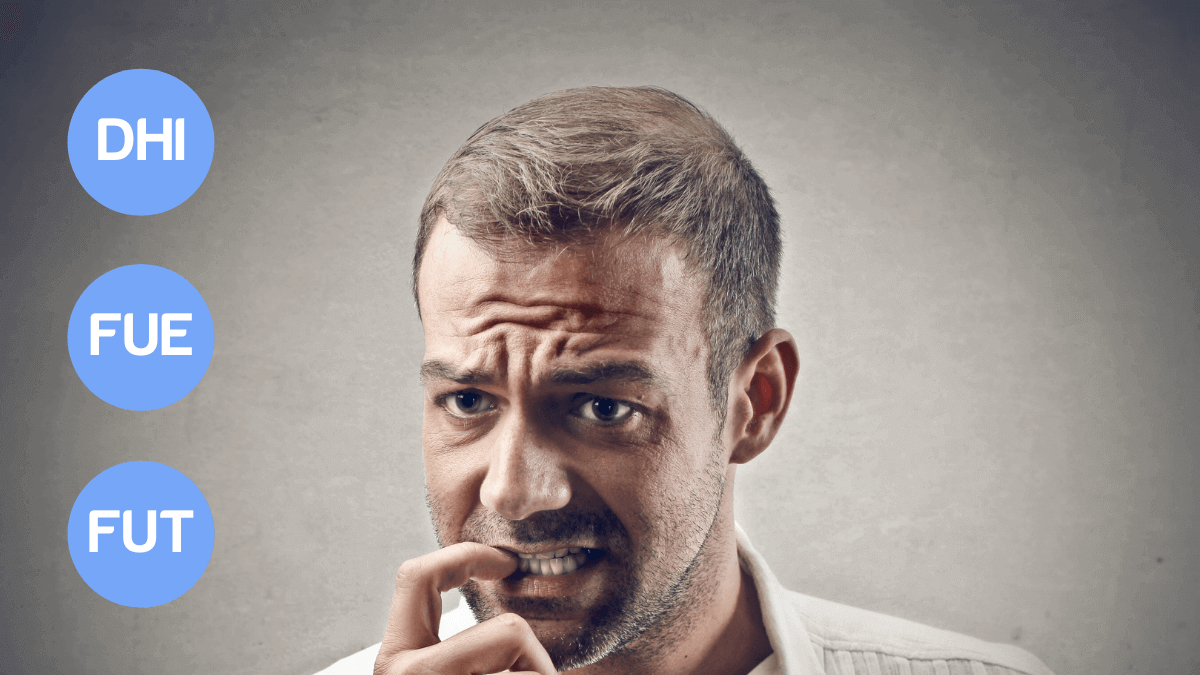TL;DR
➡ In 2025, the integration of AI into hair transplantation is a major focus, with innovations such as AI-assisted graft optimization and AI-based result simulations gaining attention.
➡ As of 2025, researchers are working on hair cloning and multiplication. They are still in clinical trials, but they will revolutionize the hair transplant industry in the future.
➡ There are many hair transplant techniques that can be listed in the 5 essential options. These options are created based on what is more modern and suited for you.
➡ Some methods with crucial drawbacks yield better coverage and more natural hair than the famous others, the most prominent being DHI or FUE.
➡ Your choice of the best solution derives from factors such as how many hair grafts are in your scalp or how much the balding area has progressed. So, first hand you should advise your doctor.
Lately, I’ve been confronting many articles asserting that some techniques are definitely outdated and should be avoided; some are definitely superior.
The most infamous one is Follicular Unit Transplant (FUT), a.k.a strip technique or strip method.
Some argue that FUT is the worst technique by saying it requires a number of stitches and it leaves scars ultimately.
However, FUT is still a widely used technique in the United States and the United Kingdom. (It is less common in Turkey.)
So, why do they still use it?
Aren’t surgeons in these countries aware of the latest advancements?
Don’t they want the best result for their patients?
The answer is NO to both of the questions above.
Bear with me while I explain each technique one by one without any bias:
Table of Contents
What Is a Hair Transplantation?
Hair transplantation is a type of autologous surgical procedure in which hairs are extracted from one part of a body, called the donor area, and implanted into the target area, known as the recipient area.
The aim is to find the most shedding-resistant hairs on the body and transplant them to zones with thin or no hair.
Generally, the back of the head is selected as the primary donor site.
The most common issue requiring a hair transplant procedure is male pattern baldness, also known as Androgenic Alopecia.
Scalp hair and eyebrow and beard hairs can be restored with modern hair transplantation techniques such as FUE and DHI.
Why Hair Transplant Surgeries are the Best Option for Restoring Your Hairline?
Most men with Androgenic Alopecia are obsessed with their hair loss.
Depression, anxiety, and social phobia issues may be confronted in a male getting balding.
Suppose your hair loss has advanced and started to affect your psychology. You have lost your self-confidence and become insecure in public places. There is no way you are going out without a hat.
And your friends take selfies with you every day and post it online. Whenever you see yourself in Instagram photos, your mood goes down.
In this case, do you want to follow the fastest route to restore your natural look, or slower routes taking years to finish?
Slower routes consist of non-surgical methods and generally take years to give a tangible result. Not getting any result after bearing side effects of non-surgical hair loss treatments is also probable.
The hair transplant surgery is performed in a day, and if proper techniques are used, you may start to enjoy part of your newly transplanted hair in 3 months. In 12-18 months, final results are achieved.
Therefore, surgical hair restoration surgery might be the best option not only to restore the hairline but also your confidence in the shortest span of time.
And as a bonus, the newly implanted hairs are long-lasting since safe donor zone hairs keep their DHT (the byproduct of testosterone) resistant properties in recipient areas.
What Are Modern Hair Transplant Methods?
First known types of hair transplant surgery trials date back to the 19th century, so the surgery has a 200-year old history.
Since then numerous techniques have been invented to achieve the most natural result by mimicking the original hair orientation and leaving no scars behind.
The most popular methods to get the best outcome are Sapphire FUE, DHI and FUT.
1- FUT – The Most Donor Hairs but Results in Linear Scars
In Follicular Unit Transplantation Surgery, the strip of skin tissue is removed from the back of the scalp. Then, a technician dissects hairs in the strip into grafts one by one under a microscope without damaging them. This phase is called strip harvesting.
Generally, extraction and harvesting parts require less effort and time to operate than other methods. And if the technician is experienced, the transection rate could be very low with the help of a microscope, meaning that the chance of harming grafts is lower.
Transection rate shows how much of harvested grafts are damaged or cut during the hair restoration surgery
Therefore, FUT surgery has the biggest graft yield without the problem of overharvesting. That is the primary reason why Strip or FUT surgeries are still in demand.
It is most appropriate for a patient having a weak donor area and large spots with thin or no hair. More coverage could be achieved with the FUT method.
The implantation stage is similar to the other techniques. The hair transplant specialists could employ DHI Choi Pen, Sapphire FUE blades, and forceps to implant grafts into the zones with thin or no hair.
Since the implantation stage is similar to others and the harvesting phase takes less time, FUT surgeries may cost less than FUE. Of course, that’s a very rough generalization.
To cover the skinless part and join two ends, stitches are used. These stitches extend the recovery period, require removal, and leave scars even after complete healing. If a patient prefers to use long hair, the scars are not detectable to the eye.
The biggest downside is that FUT requires more experience and knowledge than other techniques. It is the most major surgery among all hair transplantation methods.
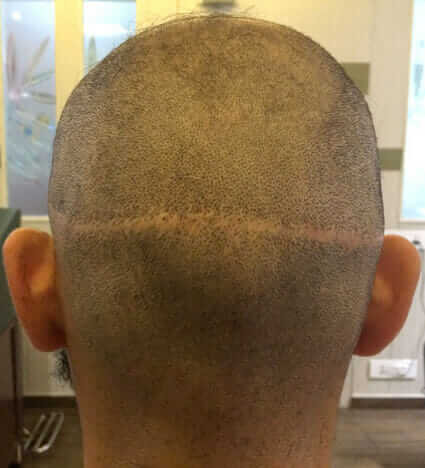
2- ARTAS ROBOT – The Newest but Requires Heavy Assistance
By nature, humans can’t perform the same every time. Especially at the end of a tiring day, human performance fluctuates, becoming more prone to error.
Modern hair restoration surgeries last 6 to 10 hours, taking all day to finish. The surgeon and the crew get exhausted in the final implantation phase. The quality of the procedure may reduce, and transection/amputation rate may increase if they are not used to such a procedure.
To make the outcome predictable and eliminate performance changes, Dr. Rassman and Bernstein, leading medical doctors in the hair transplantation field, introduced the ARTAS hair transplant robot in 2007.
In 2011, the ARTAS hair restoration robot got the FDA (the U.S. Food and Drug Administration) approval and became the first hair transplant robot.
The most spectacular feature of the robot is that the results can be simulated in a 3D environment using the patient’s 3D head model in ARTAS Hair Studio software. The patient may opt to change the outcome accordingly.
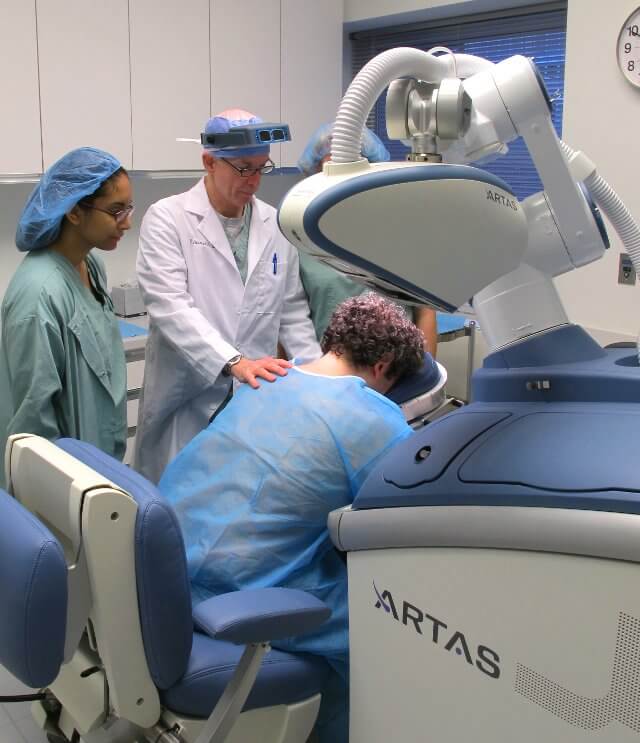
Another digital feature that many modern hair transplant techniques lack is that the robot can examine bald target zones in-depth to offer an optimized surgery plan involving limited graft placement.
ARTAS robot performs punch incisions using the image processing algorithm built upon the data coming from tiny cameras. The surgeon determines the punch size as it is in other methods and significantly affects healing time and scarring.
While the grafts are punched by the robotic hand one by one, the surgeon monitors the process through the screen in real time. Then, technicians extract grafts with forceps.
ARTAS robots currently can’t implant grafts in recipient zones.
The implantation stage is similar to the other hair transplant methods (FUE, DHI), and the method is up to the surgeon. Sapphire blade Incision and forceps implantation or Choi pen simultaneous incision and implantation can be employed.
In this stage, ARTAS Hair Studio guides the surgeon in drawing the planned hairline, putting grafts homogeneously, and achieving desired density per cm2.
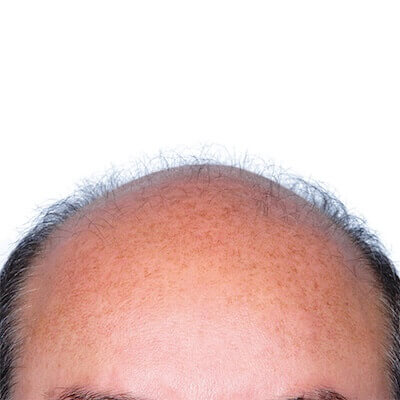
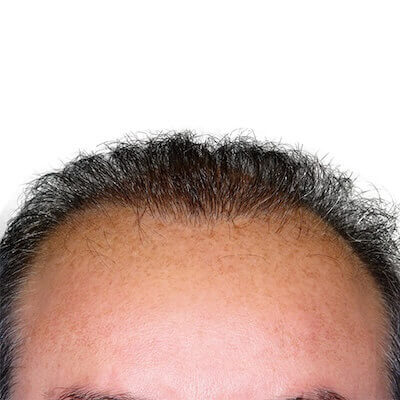
3- STEM CELL – The Most Promising
Stem cells are special undifferentiated or partially differentiated cells that can transform into other cells, increasing numbers in the right conditions.
They both exist in embryos and adults. However, their number is very low in adult tissues, and their ability to transform other specialized cell types is limited.
Until recently, it was thought that a stem cell could only create similar types of cells, not other types. For example, bone stem cells could give rise to heart, muscle, or blood cells.
The extent of stem cells for hair growth
In Stem Cell Hair Transplant, no complete hair grafts but a tissue of skin containing hair cells are taken out. Then in a laboratory environment, these cells are replicated into daughter cells, and the cell count is significantly increased.
New cell groups may form interfollicular epidermis, hair follicular units, sebaceous glands, and even vivo systems, resulting in a new hair follicle.
These new structures give rise to new hair in recipient zones. The stem cell method is not like other hair replacement systems; it is more like a hair regeneration or growth system.
Is there any scientific evidence about Stem Cell Hair Transplants?
One important study indicates how promising stem cell hair restoration research is.
Researchers took adult stem cells of hair follicles from patients via mechanical centrifugation. Then, they successfully used them to increase hair density in 11 patients with an Androgenic Alopecia scale between 3 to 5 in the Hamilton-Norwood classification.
Twenty-three weeks after the last stem cell treatment, around 29% hair density increase is observed in the treated area compared to 1% in the placebo area.
This study is extremely important to indicate the effectiveness of stem cell hair transplant in male pattern baldness treatment.
How Stem Cells are used in hair transplantation?
Regenera Active AMT is the FDA-approved and CE-certified stem cell treatment method used to treat hair loss and improve the outcome of hair transplants.
The treatment is proven to increase hair regeneration and growth thanks to the progenitor cells, growth factors, and stem cell precursors extracted from the patient’s micro-grafts.
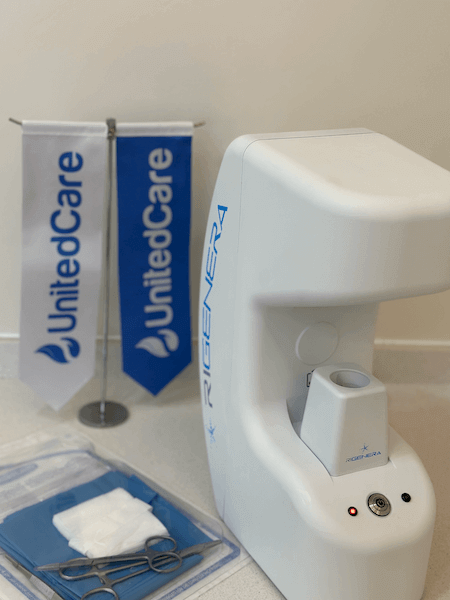
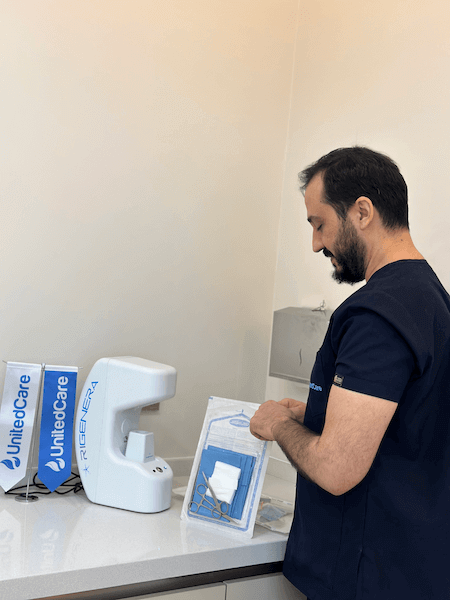
Note: The progenitor cells are powerful and flexible cells that can differentiate into different human body cells.
This FDA-approved stem cell hair transplant method is now widely used by many famous surgeons worldwide.
It takes time for stem cell treatment to show its effectiveness, and its effects last for a year in the injection zones.
4- FUE – The Most Common and Gold Standard
In Follicular Unit Extraction (a.k.a Follicular Unit Excision), individual hair follicles are extracted from the donor site using a micro motorized punch and forceps and then planted into the donor area.
Since the same punch incision, extraction, harvesting, and implantation maneuver is done thousands of times (for each graft), it is more time-consuming than FUT surgeries, where whole donor grafts are taken out as a strip with a single maneuver.
If the smallest possible motorized punch is used to extract grafts and the proper personalized treatment is created and followed, no detectable (to eye) scars will be left on the scalp.
While finding out the appropriate punch diameter (size), the morphological properties of patients’ hair, such as hair shaft diameter, hair color, etc., should be taken into consideration.
For example, Afro-American hairs are generally thick and curly. After measurements, the dermatologist surgeon should find the right punch diameter to keep the transection rate low while considering not leaving any scars after healing.
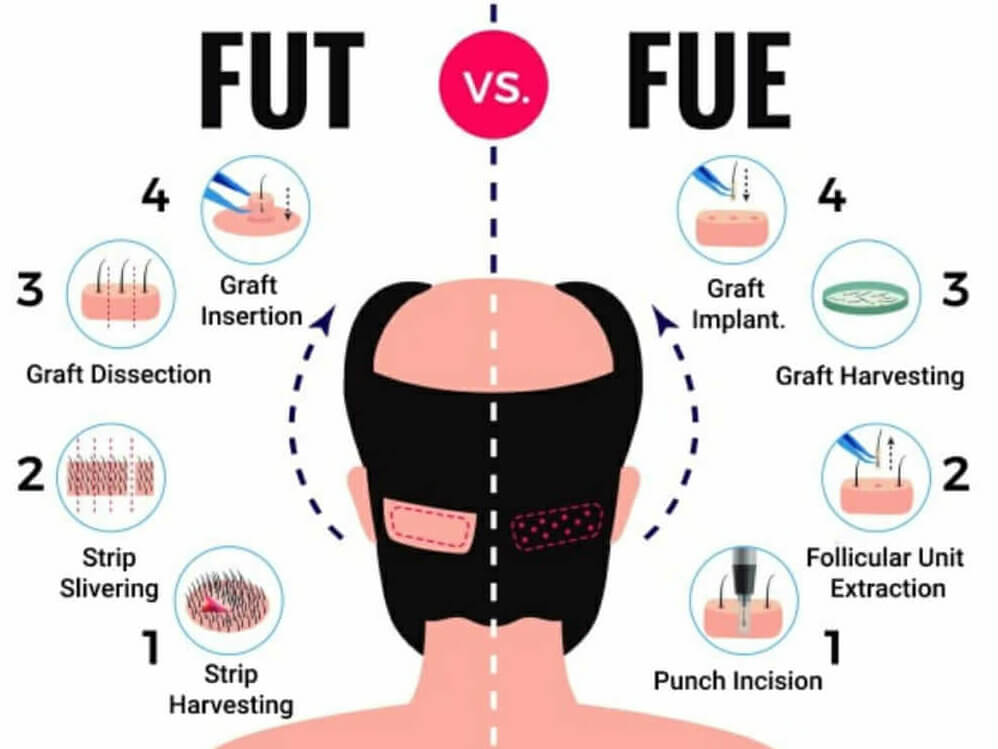
Important Warning about Hair Mill Clinics:
Hair Mill Clinics, accepting 10-30 patients daily in Turkey, operate without a dermatologist surgeon and use large-size micro motorized punches to reduce hair transplantation surgery time. Even if surgery lasts shorter, the big wounds in the donor area result in scarring even after the complete recovery period.
Also, big wounds mean longer recovery time, more swelling, numbness, pain, and an increased chance of hair transplant infection.
As you understand, the FUE method has a tradeoff between surgery duration and quality.
One of the biggest advantages of FUE over DHI (a.k.a DHI FUE) is that mega sessions can be done. More than 5000+ grafts can be transplanted in a session with bio enhancements support.
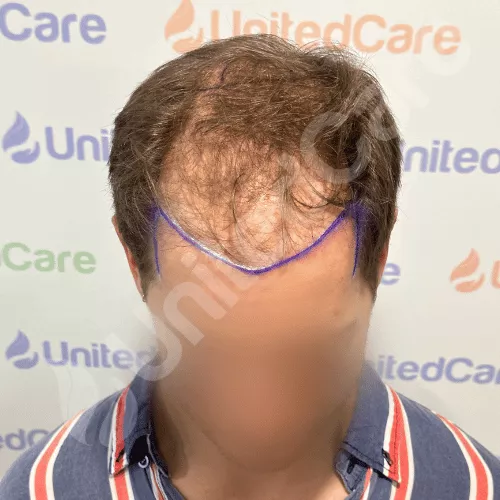
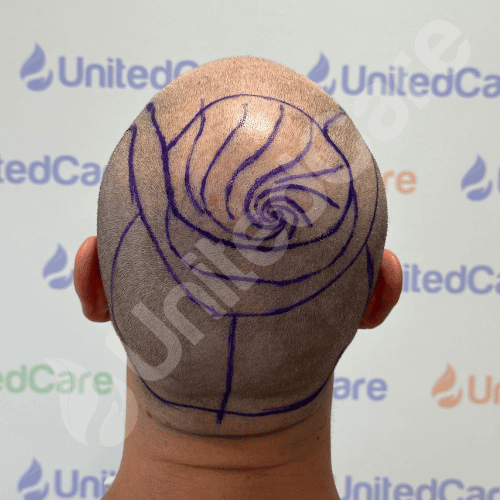
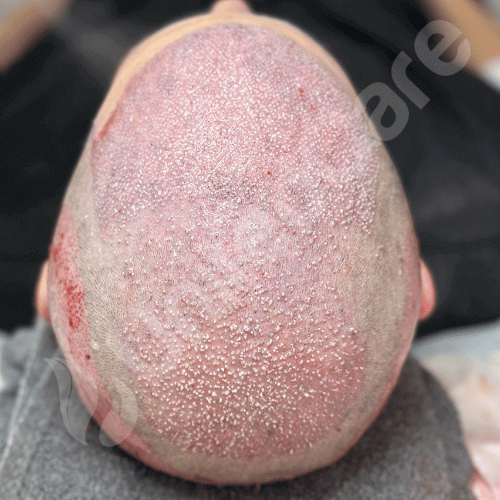
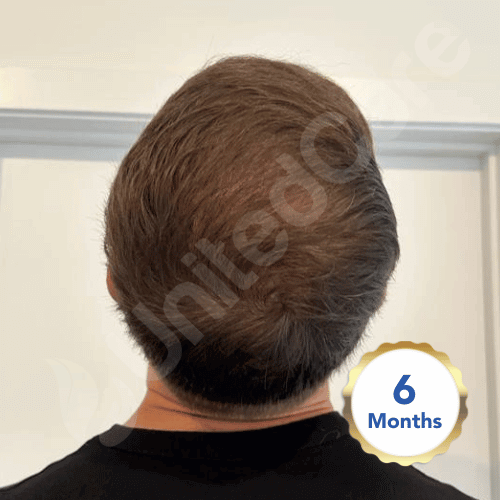
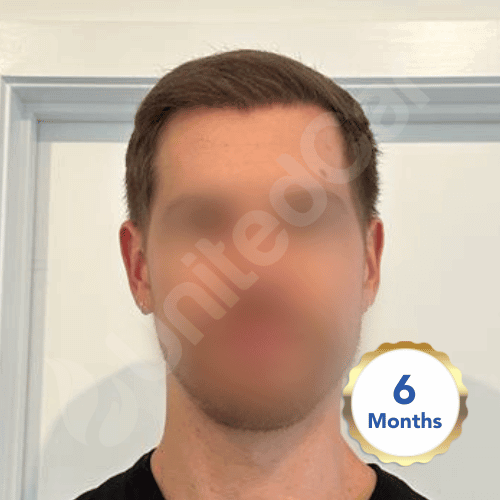
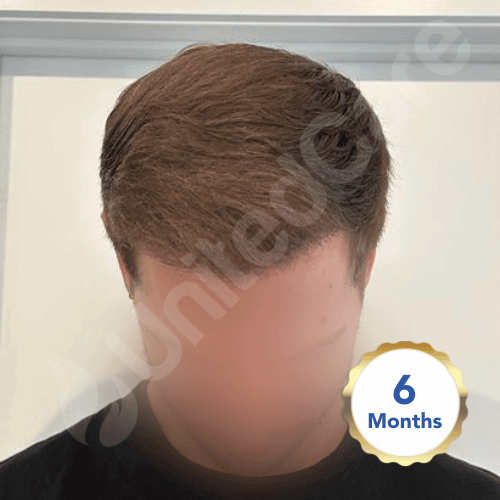
What is the Sapphire FUE Hair Transplant Method?
When cheaper steel blades/scalpels are used to make FUE incisions, these incisions can’t be smaller after a point. In Sapphire FUE, sapphire blades made from expensive materials are used to make smaller incisions or microchannels.
Sapphire blades are sharper, and tips are more durable. This increases the hair transplant surgeon’s precision and, therefore, the quality of microchannels.
The channel quality is essential since grafts will be placed in these cuts in the next phase, and the result will change accordingly.
Also, smaller and more precise incisions mean more minor trauma is caused to the scalp reducing the healing time and increasing graft survival.
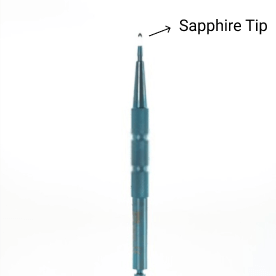
5- DHI – The Most Precise but Limited Grafts
Direct Hair Transplantation is a type of advanced FUE with simultaneous micro channel opening and implantation. It is also known as DHI FUE.
Until the implantation stage, DHI FUE and regular FUE stages are the same. The 2-step implantation maneuver of regular FUE makes it more prone to errors (first incisions or pre-cuts are made, then grafts are implanted with medical forceps). DHI implantation is different.
In contrast to regular FUE, pre-cuts or incisions are not required before graft placement in the DHI method. First, a technician inserts a hair into the special Choi Implanter Pen, and then the cosmetic surgeon directly puts the graft into the scalp using the preloaded pen.
In FUE, medical forceps are used to place grafts, and in unskilled hands, the graft may be easily damaged even by squeezing the forceps hard. In DHI, implanter pens solve this problem.
In addition, DHI allows surgeons to better control depth, angle, and density thanks to the special pen.
However, no research asserts that DHI is better or more effective than regular FUE. I think that DHI solves many problems and complications of FUE.
DHI may sound like a superior method, but it becomes inferior if the surgeon is inexperienced. DHI requires more time and patient cases to master.
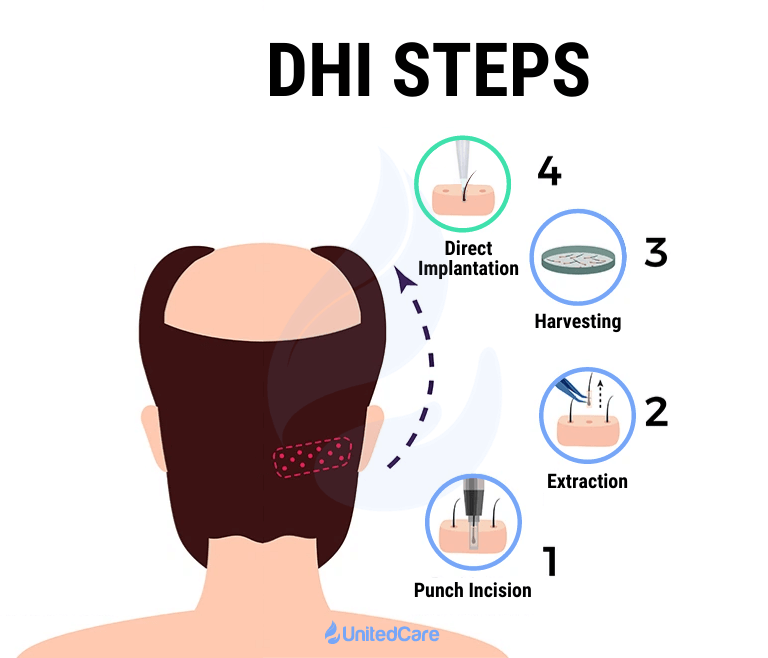
Is the DHI method faster than FUE?
Even though some hair clinics claim that DHI is faster, this is not true unless you are ok with two different styles on your implantations.
To perform it faster than regular FUE, two technicians simultaneously put grafts into different zones, which is harmful to the natural look.
The patient has two different hairstyles and orientations (angle, depths, and densities) after 12-18 months ending up with a hair transplant failure.
Since only one surgeon (not a technician or nurse) should insert grafts with a DHI pen for the best result, the maximum number of grafts transplantable in a session is lower than FUE.
I recommend a maximum of 3500 grafts in a session with the DHI. After that number, the surgery takes too long, the crew gets tired, and the trauma on the patient’s body increases the chance of complications.
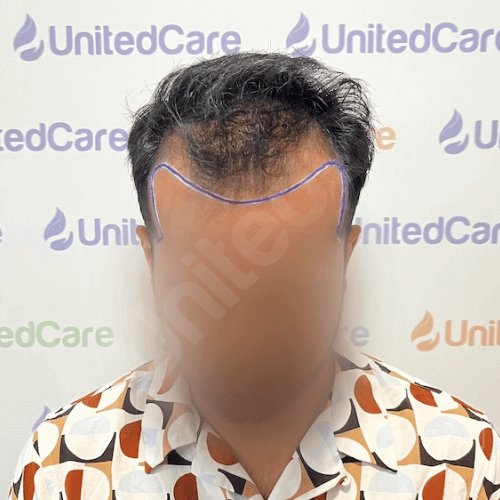
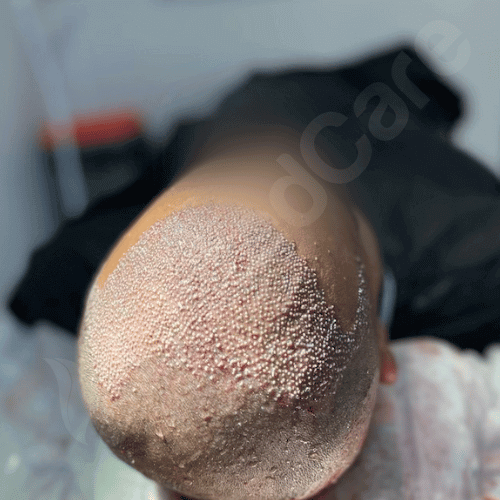
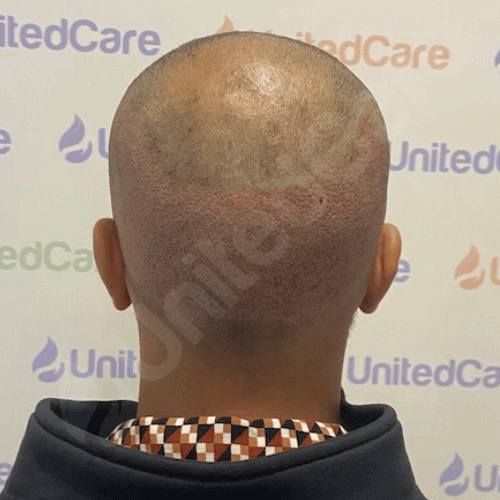
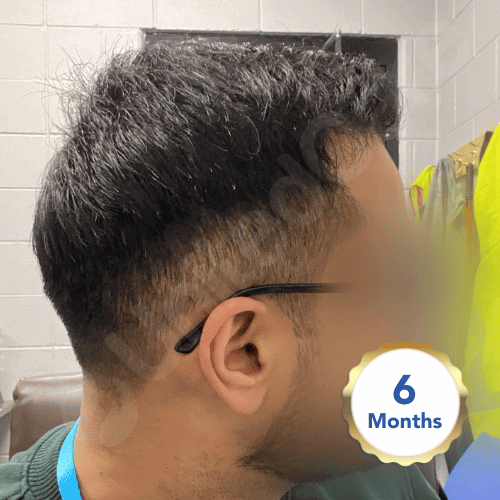
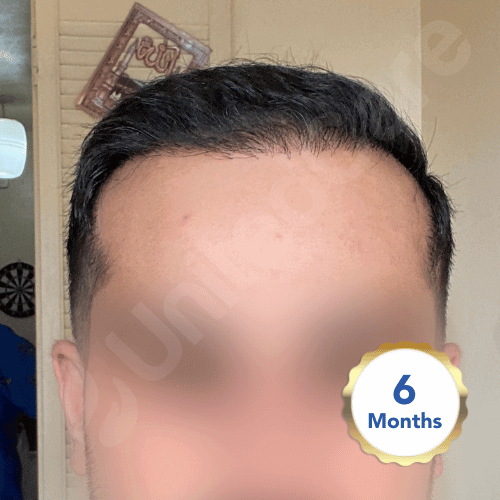
What Is the Best Hair Transplant Method?
There is no best hair transplant method; it depends on the patient’s unique condition and should be defined in consultation with a hair transplantation surgeon.
Some hair transplant methods with crucial drawbacks might yield better coverage and more natural hair than the famous others.
Briefly,
FUE:
- Ideal to cover large areas.
- It requires less experience than DHI.
- Mega sessions (5000 grafts) are possible.
DHI (or DHI FUE):
- Better suited for smaller bald/thin areas.
- Higher density can be achieved with DHI in small zones.
- Unshaven hair transplantation is easier with the DHI. This is important, especially for females asking for an unshaven hair transplant.
- DHI pen maneuver requires more mastery and skill. Long-term training is required.
- Up to 3500 grafts can be transplanted in a session.
FUT:
- The patient has large bald/thinning areas.
- The donor capacity is low due to hair loss or previous hair transplants.
- Achieving good coverage and density are priorities.
- The implantation method could be FUE or DHI FUE.
A case where the FUT method might be the best:
- a 35-year-old patient has lost 45-50% of scalp hair.
- Had a previous hair transplant and alopecia has progressed after.
- Has a weak donor area due to AGA and past hair transplantation.
- Has no problem not using the short hair in the back of the head.
A case where the ARTAS Robotic Hair Transplant method might be the best 🤖
- A patient likes to rely on the latest software and technology to minimize human-related errors.
- Desire to see the plan and possible outcome in a 3D digital environment.
- Have no budget limitations.
A case where Stem Cell Hair Transplant method might be the best 🦠
- If patients are in early stages of hair loss and could achieve great results with regeneration support.
- Wants full coverage, no thinning zones or balding zones in their hair transplant surgery.
- Has lost the majority of lost hair, and multiple hair transplants are a must.
- Can increase the budget a bit to get a better result.
A case where the FUE Hair Transplant method might the best: 💎
- A patient has large bald spots on the frontline, mid-scalp and vertex.
- Has substantial donor area.
- At least 4000-4500 grafts required for good bald spot coverage.
- Should be done in a single day/single session.
A case where DHI Hair Transplant method is the best: 🖋
- A patient has relatively small bald spots.
- Has a donor capacity to cover bald spots.
- 3000-3500 grafts are enough
- Desires unshaven hair transplant
| Method | Scarring | Yield per session | Avg. Cost (Turkey) | Downtime | Best For |
|---|---|---|---|---|---|
| FUT | Linear scar | Very high | Unknown (NA) | 1 month | Low donor density |
| Robotic FUE (ARTAS) | Micro-dots possible | High | Not Available | 7–14 days | Precision harvesting |
| Sapphire FUE | None (Full healing) | High | $3,000–$8,000 | 7–14 days | Fine incisions |
| DHI (Choi Pen) | None (Full healing) | Moderate | $4,000–$9,000 | 7–14 days | Best angle control |
| Stem-Cell AMT (Regenera) | None (injection sites) | Adjunctive | $1,500–$2,500 per session | Minimal | Boosting graft survival |
| Emerging: Exosome/PRP+Exosome | None | Adjunctive | $1,000–$1,800 | Minimal | Accelerated healing |
How Can I Find the Best Hair Transplant method?
An expert who has seen thousands of cases and combined theoretical knowledge with practical experience could quickly determine the best technique for you, considering your needs and wishes.
You can start by finding a dermatologist and booking a consultation to discuss your unique condition.
Also, remember that not only the best technique but also the best execution is critical. When combined in a hair transplant clinic, a patient can enjoy a full head of hair after a full recovery.
At UnitedCare, Dermatosurgeon Utkan Kızıltaç has performed Sapphire FUE, DHI, and combination (Sapphire FUE + DHI) surgeries for years.
And he is one of few dermatologists in Turkey employing bio-enhanced hair restoration and stem cell hair transplantation methods to enhance graft survival and reduce the chance of shock loss after hair transplantation.
To get his opinion about your condition👇
Find out the best hair transplant method for you.
Get a free hair transplant analysis from a dermatologist:
Frequently Asked Questions (FAQs)
Is FUE hair transplant the best?
Currently, FUE hair transplantation methods including DHI which are a type of advanced FUE are the gold standard in the hair transplantation sector. However, the FUT hair transplant method might be better for some patients.
Is DHI better than Sapphire FUE?
If you have relatively small balding/thinning zones on your head and need less than 3500 grafts or want unshaven hair transplants, DHI is better than Sapphire FUE.
Is a Robotic Hair Transplant better?
In terms of 3D hair transplant simulation, digital hairline drawing and density/graft insertion planning, robotic hair transplant is better than other methods.
What is new in hair transplantation in 2025?
AI-Assisted Graft Planning and 3D AI Result Simulators are on the rise, along with exosome-rich injectables with PRP. Other than that, other techniques and technologies are pretty much the same.
